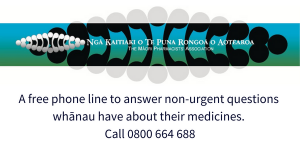Allergic symptoms occur when your body becomes sensitive to things around you, such as foods, plants, animals and medicines. If you are allergic to something, it is called an allergen.
When your body is exposed to allergens it releases histamine, a chemical that is part of your body’s immune response. Histamine sets off an “allergic reaction” which includes symptoms (eg, sneezing, runny nose, watery and itchy eyes) and skin reactions (eg, itching, redness and swelling).
Antihistamines are medicines that act by blocking your body's response to histamine. This reduces the severity of the reaction and eases the symptoms of allergy.
Low or no data? Visit zero.govt.nz, scroll down the page then click on our logo to return to our site and browse for free.
Antihistamines
Key points about antihistamines
- Antihistamines are mainly used to treat allergies such as hay fever, hives and itching.
- They may be used to help reduce feeling sick (nausea) and being sick (vomiting).
- Find out how to take it safely and possible side effects.

Antihistamines come in different forms, including tablets, capsules, nasal sprays, eye drops and syrups. There are many brands available on prescription from your prescriber or over the counter at your local pharmacy. Different antihistamines are better at treating different symptoms, so ask a member of your healthcare team to advise on which antihistamine is best for your needs.
Generally, antihistamine tablets or capsules are classified into 2 main groups – sedating antihistamines and non-sedating antihistamines.
Sedating antihistamines can make you feel quite drowsy or sleepy. They are used when the effect of drowsiness is helpful to the condition being treated such as in some skin conditions where itchiness can cause sleep disturbance.
- Sedating antihistamines may affect your concentration and performance of some tasks that require you to be alert, eg, driving, and operating machinery. Take care until you know how these medicines affect you.
- Limit or avoid alcohol while you are taking sedating antihistamines – alcohol can make the drowsiness worse.
| Examples of sedating antihistamines: | |
|
Be careful about giving sedating antihistamines to children
Sedating antihistamines are often found in cough and cold medicines. These medicines are not recommended for children under 6 years of age for coughs and colds. Read more about cough and cold medicines in children.
Sedating antihistamines are not to be used in children under 2 years of age for other conditions.
Non-sedating antihistamines are less likely to cause drowsiness. Although drowsiness is unlikely to happen with these medicines, it can still occur in some people and may affect the performance of skilled tasks such as driving. Take care until you know how these medicines affect you.
| Examples of non-sedating antihistamines: | |
|---|---|
|
antihistamine tablets usually start to work within 30 minutes and are likely to be most effective within 1 to 2 hours.
- For allergies such as hay fever, antihistamines are more effective when taken regularly as a prevention, before symptoms occur, rather than only when you have symptoms.
- In the spring and summer months, the pollen count is generally higher and you may be in contact with the allergen often. Taking the medication regularly will help keep your symptoms under control.
Here are some things to know before you take antihistamines. Other things may be important as well, so ask your healthcare provider what you should know about.
Sedating antihistamines, in particular, may not be suitable for some people. If you have any of the following problems, let your healthcare provider know before you start taking any antihistamines:
- glaucoma
- problems with your liver or kidneys
- epilepsy
- acute porphyria (a rare metabolic disorder)
- prostate enlargement (benign prostatic hyperplasia).
If you are pregnant or breast-feeding check with your healthcare provider before taking antihistamines.
Driving or operating machinery
Antihistamines can affect your concentration (how you focus or pay attention). They may slow your reaction times and cause sleepiness. This is more likely with sedating antihistamines but can some times happen with non-sedating antihistamines. Don't drive or operate machinery until you know how antihistamines affects you. See driving and medicines.
Most people who take antihistamines don't have any serious side-effects. If side-effects do occur, they are usually minor.
| Side effects | What should I do? |
|
|
|
|
|
|
|
Did you know that you can report a side effect to a medicine to CARM (Centre for Adverse Reactions Monitoring)? Report a side effect to a product.(external link) |
|
References
- Anhistamines(external link) NZ Formulary
- Changes Regarding the Use of Sedating Antihistamines(external link) Medsafe, NZ, Sept 2018
Credits: Sandra Ponen, Pharmacist, Healthify He Puna Waiora. Healthify is brought to you by Health Navigator Charitable Trust.
Reviewed by: Angela Lambie, Pharmacist, Auckland
Last reviewed:
Page last updated:





